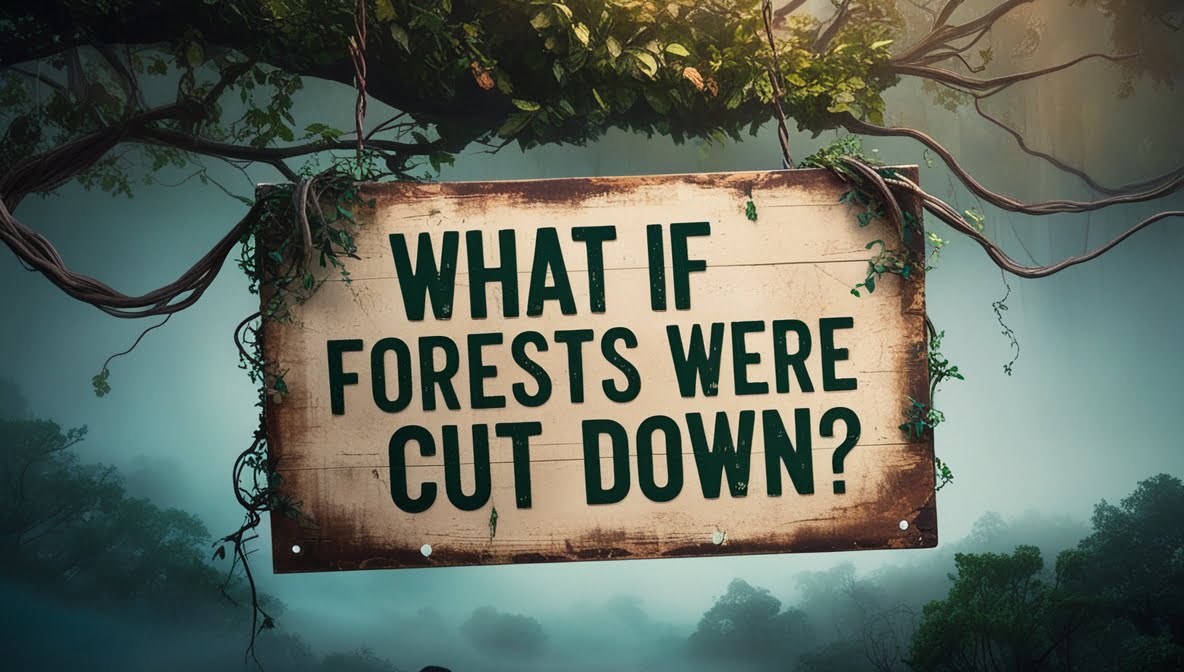All the forests in the world suddenly vanished. What would that even look like? You might think it’s just fewer trees and some bare landscapes, but the reality is far more terrifying than that.
We don’t really give it much thought on a daily basis, but forests are like the lungs of our planet. They’re quietly doing their thing—taking in carbon dioxide and giving us oxygen. But what would happen if those lungs stopped working?
What Happens to Oxygen Levels?
One of the first questions that comes to mind is, “Would we run out of oxygen?” Forests produce about 28% of the world’s oxygen, but the majority (around 70%) actually comes from ocean plankton. So, while we wouldn’t immediately suffocate, the air wouldn’t be as breathable as we might think. More carbon dioxide would hang around in the atmosphere, leading to all sorts of issues.
But here’s the catch—losing the world’s forests would mean carbon dioxide levels spike, making climate change even worse. Imagine living in a world where summers feel like a sauna, even in places where winter jackets were once a thing.
How Would This Affect Climate Change?
Cutting down all the forests would be like turning on an oven and leaving the door open. Forests act as carbon sinks, absorbing massive amounts of CO2. Without them, that carbon has nowhere to go but up into the atmosphere, trapping more heat and speeding up global warming. The ice caps would melt faster, sea levels would rise, and those “once in a century” storms? They’d become annual events.
Even if you’re someone who loves the heat, a world without forests would be taking it to an extreme. Picture cities baking under relentless sun, with no shade to hide under.
Where Would All the Animals Go?
Here’s a heartbreaking thought: Where would the wildlife go? Forests are home to 80% of the world’s terrestrial biodiversity. Without trees, the animals that depend on them—birds, mammals, insects—would have no home. Sure, some critters might try to adapt, but many species would likely go extinct.
Imagine trying to live without your house, no shelter, no food supply. That’s essentially what wildlife would face. The food chain would collapse, and that affects us too—fewer bees, for instance, would mean less pollination, and that means fewer crops. Goodbye, fresh fruits and vegetables!
How Would This Affect Our Daily Lives?
You might be thinking, “I don’t live near a forest, so why should I care?” But forests provide way more than just scenic views for hikers. They regulate weather patterns, store fresh water, and provide resources like wood and medicines. Plus, about 1.6 billion people rely on forests for their livelihoods.
Imagine if you were a farmer whose crops relied on steady rainfall. Without forests to regulate local climates, droughts and floods would become more common. Even urban dwellers would feel it as food prices soar and water becomes scarcer.
How Would This Affect the Economy?
Forests are a huge part of the global economy, contributing to industries like timber, pharmaceuticals, and tourism. If all the forests disappeared, so would jobs in these sectors. We’d lose billions of dollars in trade, not to mention the cultural and spiritual value that many indigenous peoples place on forests.
Here’s a fun thought experiment: What would happen to the price of wood furniture? With no forests left, wood would become a rare commodity. That cheap IKEA shelf you love? It might just become an heirloom, passed down for generations like fine china.
Could We Survive Without Forests?
Now, you might be wondering, “Couldn’t we just plant more trees?” Unfortunately, it’s not that simple. Reforesting the world would take centuries, and newly planted trees don’t have the same carbon-absorbing power as old-growth forests. Even if we started now, we’d be racing against time.
Let’s not forget that technology can’t fix everything. There’s no magic device that can absorb CO2 at the scale forests do—at least not yet. And by the time we figure something out, it might be too late.
Would There Be Any Benefits?
You might think there’s some silver lining, like, maybe, more land for agriculture? But even that has its limits. Without forests to stabilize the soil, erosion would skyrocket, and soon, the land wouldn’t be much good for farming anyway.
If you’re really stretching for a positive, I suppose some pests like mosquitoes might lose their habitats too. But would that be worth the cost? Probably not. Plus, forests play a crucial role in balancing ecosystems, so getting rid of them might actually increase the populations of some pests as their predators disappear.
What Can We Do to Protect Forests?
So, what’s the takeaway? Clearly, cutting down all the world’s forests would be disastrous for every living thing on Earth. But the good news is that we still have time to protect what’s left.
Simple actions like supporting sustainable products, reducing paper waste, and advocating for stronger environmental policies can make a difference. Think of it like this: every time you recycle, you’re helping keep a tree standing. And every tree counts.
It’s easy to feel powerless when we talk about big environmental issues, but small changes do add up. Just like how every tree in a forest plays its part, so can we.
Final Thought: Forests Are More Than Just Trees
In the end, forests are much more than just a bunch of trees. They’re ecosystems, homes, and even climate regulators. They make our planet livable, and losing them would mean losing a huge part of what makes Earth, well, Earth. It’s hard to imagine life without them—and honestly, who would want to?
Let’s keep those trees standing. After all, they’re doing more for us than we usually realize!






